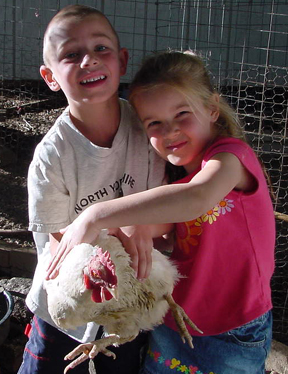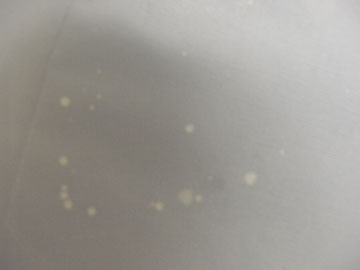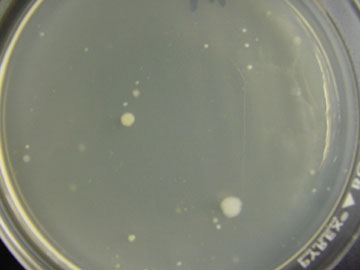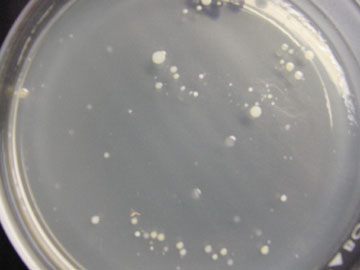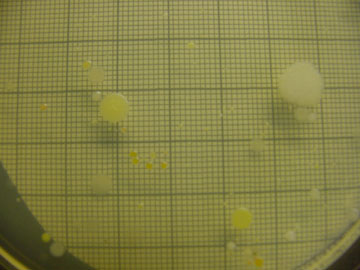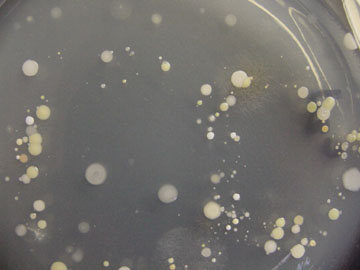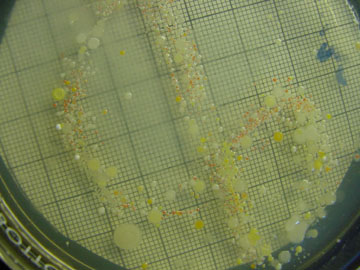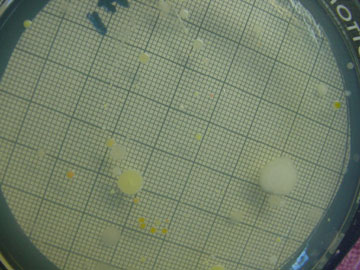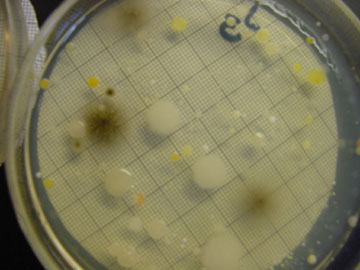What is
a more effective bacterial growth deterrent, Ivory soap or anti-bacterial
hand lotion?
|
||||||||||||||||||||
|
Author(s): Jen Klipfel and Peggy Klipfel LeDuff |
Growth & Development Experiment |
|||||||||||||||||||
|
Research Question:Which cleaner is more effective in reducing bacteria found on dirty hands, regular ivory soap or anti-bacterial hand lotion?
|
Our research assistants hard at work at play. |
|||||||||||||||||||
|
Standards addressed: 1. The fundamental life
processes of plants and animals depend on a variety of chemical reactions
that occur in specialized areas of the organism's cells. As a basis for
understanding this concept:
6. Stability in an
ecosystem is a balance between competing effects. As a basis for
understanding this concept:
10. Organisms have a
variety of mechanisms to combat disease. As a basis for understanding the
human immune response:
|
|
|||||||||||||||||||
|
Independent variable |
Dependent variables |
Controls |
Series |
|||||||||||||||||
|
Time |
The amount of bacterial growth on experimental petri dishes compared with growth on control dishes |
1. Same hands to touch agar and plant bacteria. 2. Same amount of cleaning agent used 3. Agar sitting in same conditions for same length of time. 4. Same procedure for detailing bacterial growth. 5. Cleaners at same temperature 6. Same length of time for kids to clean hands. |
1. Application of liquid soap 2. Application of Anti-bacterial hand lotion. |
|||||||||||||||||
|
Materials |
Procedures |
|||||||||||||||||||
|
10 Petri dishes with agar Dirty childrens' hands Bar of ivory soap Antibacterial hand lotion Timer Wash basin Thermometer Warming lamp Marking Pen |
1. Take a child’s dirty hand and swab two petri dishes as controls, one with index finger and one with middle finger in a figure eight.. 2. Repeat this process for the two control dishes for child number 2. 3. Have children clean their hands.Both children will wet their hands in room temperature water. Child one will apply antibacterial hand lotion and rub their hands for thirty seconds. Child two will soap up their hands for thirty seconds with ivory bar soap. Each child will then rinse their hands in clean, room temperature water. 4. Child #1 will touch three petri dishes with three different fingers in a figure eight. 5. Child #2 will touch three petri dishes with three different fingers in figure eights. 6. Place all ten dishes under a heat light with a thermometer and observe bacterial growth over a four day period. 7. Daily record the temperature, description of growth and take pictures of interesting data. 8. Record information in data table below. 9. Draw conclusions about the best cleaner to use on children's dirty hands. 10. Analyze results of effectiveness of cleaning agents on deterring growth of bacteria. |
|||||||||||||||||||
|
|
||||||||||||||||||||
|
Click here to access blank excel data table
Click here to access sample filled-in excel data table for this lab |
Here is a blank data table to be used in your experiment
Here is the data table generated from this initial experiment. |
|||||||||||||||||||
|
|
|||||||||||||||||||
|
|
|||||||||||||||||||
|
|
|
|||||||||||||||||||
|
Conclusion: Based on the data collected, antibacterial hand lotion is a superior hand cleaner when considering amount of bacteria on a child's hands, under the cleaning conditions we used in this experiment. The effectiveness of the soap was limited by the time of cleaning allowed, 30 seconds, and the temperature of the water, 68 degrees F. I used this temperature so that the lotion and soap treatments would be at the same temperature. In conclusion, though soap and warm water may be more effective, in the world of kid play, where, when asked to clean their hands, most kids do it quickly, in cold water, antibacterial hand lotion is a great, and more effective alternative based on the results here. |
|
|||||||||||||||||||
|
References & Links: Here is a nice link for multiple high school biology labs, including many on bacteria and microbiology This site discusses the importance of hand washing, with step by step directions.
|
||||||||||||||||||||

